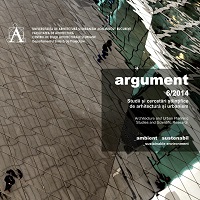FONDUL URBAN ISTORIC CA AMBIENT SUSTENABIL
THE HISTORIC URBAN HERITAGE AS A SUSTAINABLE AMBIENT
Author(s): Alexandra PăcescuSubject(s): Museology & Heritage Studies, Rural and urban sociology
Published by: Editura Universitară “Ion Mincu”
Keywords: sustainability; urban scale; historic urban heritage; public space; historic centre/area; refurbishment; mixed use; urban restoration/rehabilitation; activity-inducing/dynamic function;
Summary/Abstract: When speaking of sustainability we generally mean using resources in a responsible way, in order not to exhaust them. In architecture, we often think of energy saving, ecological materials, traditional crafts. By changing the angle, we could include the historic heritage as part of the urban resources. We could say that it is a resource that can be exhausted, meaning that without proper management it goes to waste or into decay. On the other hand, if we manage to live up to its potential, we not only act “ecologically” by saving and reusing, but reclaim a landmark for cultural identity and this will pay off in terms of the attractiveness of the city with financial benefits. Function is a defining element in the rehabilitation of the historic heritage. More to the point, the way that different uses in architecture come together in various programs and the quantity of public space they incorporate may transform a building or an entire area into an urban attractor and increase its rentability. Several European case-studies (Glasgow, Hamburg, Madrid) have been chosen to demonstrate different typologies of context and methods that have been used to create a global strategy for rehabilitation. Coherence in planning is brought by the transition from the whole towards architecture design projects at various scales. The final goal would be to see how these examples could serve as role models for the rehabilitation of the historic heritage in Romania. In order to reach this aim, we first need to understand what others have experienced, to evaluate the current local situation and identify the overlapping areas of the two directions for study.
Journal: Argument
- Issue Year: 2014
- Issue No: 6
- Page Range: 277-297
- Page Count: 21
- Language: English, Romanian

